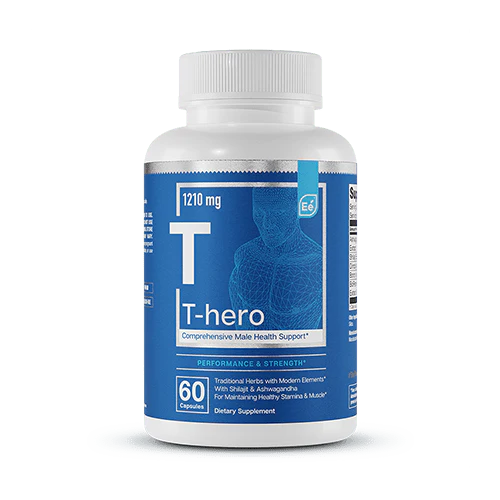Here’s How to Get Started Rock Climbing
Ready to take your adventure to new heights? Rock climbing could be just the adrenaline-fueled activity you’re looking for to keep your mind sharp and your body in shape. Many people are leaving their typical workouts behind or adding this into their fitness routine to get into a sport that engages nearly every muscle group in their body. Not only is it a great workout, but it’s also invigorating and rewarding in a way that doing squats and pushups just never will be. Is rock climbing your new full-body workout?
Rock Climbing Health Benefits
If you’ve never done it, you may not realize just how much effort it takes to climb a vertical surface. Like other action sports, this activity gets your whole body involved, your heart rate up, and keeps your mind engaged. Never boring; it literally keeps you on your toes. There are many health benefits you can gain from this thrilling sport.
Strength
Climbing will activate and strengthen all of your muscles, even your fingers and toes. Although it does take a lot of upper body strength to pull yourself up to the next hold, leg strength should not be undervalued in rock climbing. Not only that, but this sport will tone and strengthen your core, shoulders, back, forearms, tendons, and many other muscles you probably never even knew you had.
Endurance
The amount of endurance this sport requires may be underestimated until you try it for yourself. Lifting your body onto a wall, keeping it there, and then moving upward for an extended period will surely reinforce your endurance, physically and mentally. Although you may feel wiped out after a climb, this intense exercise can help promote healthy energy levels, and most people feel super pumped after a good climb. It will definitely push your limits, and you will burn calories at a higher rate than a lot of other forms of exercise.

Flexibility
Stretching your body and limbs to reach the next hold takes some flexibility, and sometimes you have to bend your body in unusual positions to balance yourself or get from one hold to the next. If you aren’t naturally flexible, this will be an important area to focus on as you are learning or developing your climbing skills.
Cardiovascular Health
Rock climbing gets your blood pumping! Although it may seem like a slow climb when you are on the wall or a cliff, it takes a lot of effort, and your body responds with an uptick in your heart rate. Longer climbs or going up and down several times will also enhance the aerobic aspect of climbing, which keeps your heart in good health.
Supports Healthy Testosterone Levels
Intense workouts such as rock climbing can benefit male hormonal health and promote healthy testosterone levels. Pairing these activities with a healthy diet and supplemental support can help keep your testosterone levels within normal ranges.
Balance and Coordination
Learning to shift your body weight to stay balanced while climbing takes practice and patience. Climbing also helps promote optimal motor skills and hand, eye, and foot coordination!

Memory and Problem-Solving Skills
This sport activates your mind as well as your body. You’ve got to keep your mind sharp to climb well, and it takes some thinking to map out a climbing route, learn sequences, or solve what are called “problems” while bouldering. Overall, rock climbing takes some intense concentration and requires brain power.
Mental Health
Rock climbing can help you build confidence by teaching perseverance, strengthening your willpower, and overcoming obstacles and fears. It’s a great way to connect with a diverse community, enhance communication skills, and encourage social interaction. It connects your body and mind, helps you tune into your breathing, and stay in the moment.
Al Goldman, Creative Brand Manager of Essential elements, is our inspiration and an avid rock climber. A self-proclaimed “wellness geek” passionate about adventurous fitness and supporting others on their journey toward high performance, she was quoted saying:
“What I love most about climbing is that the entire world opens up to you. With hiking, my feet were limited by the vertical nature of scaling things I wanted to get up. There is also an incredible sense of calm that arrives while climbing, a state of meditation, so to speak, where the mind can only focus on exactly what's in front of it. It's an incredible way to stay grounded, present, and tuned into nature.” - Al Goldman, Creative Brand Manager for Essential Elements®.
Types of Rock Climbing
Bouldering
Bouldering is a great way to get started with learning basic climbing skills. Generally, it will be short distance climbs, with no ropes and no harnesses, so you can free climb to your heart's delight. It is quite challenging but approachable, and most climbing gyms will have easy routes that you can try if you are just getting started.
That is not to say it isn’t without risks. Even if you are bouldering indoors with padded floors, you’ve got to know how to fall in the right way to protect yourself from injury. Bouldering outdoors always brings new challenges, such as awkwardly placed handholds and footholds, rough, sometimes skin-scraping surfaces, and of course, unpredictable weather. It’s common to bring pads along to set up underneath an area for added protection. Even if someone is an experienced climber, each climb is different and will take some practice to master.
Top Rope Climbing
Most climbing gyms and many popular outdoor climbing areas are set up with anchors that the rope is threaded through at the very top of the climb. One end of the rope is connected to the climber's harness, and the other is put through the belay device connected to the harness of another person standing below. The person belaying at the bottom works as a counterbalance to the person climbing. If the climber loses grip or slips, the belay rope and the lock on the belay device keep them from falling. Obviously, you want your belay buddy to know what they are doing so you can climb a wall or cliffside safely.

Lead Climbing
Rather than have the rope anchored at the top of the climb, with lead climbing, you’re connecting your rope to anchors along the way as you go. Each anchor acts as a safety, but if you lose your grip, you will fall farther than if you were using a top anchor. The person belaying climbs below the lead climber and has a supportive role in protecting the lead climber from dangerous falls. Climbing gyms may require you to demonstrate specific skills before you are allowed to participate, and some will have special nights or classes dedicated to gaining the experience to do this safely. Lead climbing is considered more advanced, and your lead climber will need to have extensive knowledge, experience, and sometimes even a certification.
Indoor vs. Outdoor Climbing
There are, of course, pros and cons to both. Either way, you’ll find that getting into climbing helps to elevate your health.
Indoor Rock Climbing
Indoor rock climbing is a great place to get started. Before you venture out to a challenging cliffside, master the basics at a local bouldering and/or climbing gym. They will usually provide lessons to help you get started and strengthen your skills, and maybe you’ll be able to find a climbing buddy to help show you the ropes. This will give you a chance to get oriented with foundational concepts like how to belay, use the harness, and tie knots.

Outdoor Rock Climbing
Once you feel like you have a grip on the basics, you may want to test your skills in an outdoor climbing situation. Even if you feel like you are a pro at indoor climbing, outdoor environments bring additional challenges to even a seasoned climber. Make sure you go with an experienced climbing partner or instructor, as the stakes are much higher on an outdoor climb.
Say goodbye to padded floors and foam mats and be ready to get up close and personal with mosquitos, watch for falling rocks and adapt to uncooperative weather. The spacing of the holds won’t be as evenly distributed as on a man-made wall, and the bolt spacing for lead climbing may be much more challenging. You may need to hike a distance to get to the climb, and you’ll need to be prepared with lots of gear.
All of that being said, there is nothing like an outside climb in a beautiful location on a challenging cliffside. Think of it as something to work toward, and be prepared to get outside your comfort zone.
Rock Climbing Gear
♦ Shoes: Rock climbers wear special shoes that make it easier to grip the toes of their feet into crevices and stay on the footholds.
♦ Chalk: This helps keep your fingers from getting sweaty and gives you a better grip.
♦ Harness: The harness wraps around your waist and legs and connects to the rope while lead climbing or top-rope climbing.
♦ Helmet: These are used for protection from falling rocks and other dangers while climbing outdoors.
♦ Climbing Rope: There are many factors to consider when choosing a climbing rope, such as diameter, length, durability, strength, and stretchability. Most gyms will already have the ropes set up for you to use, but if you are venturing to an outdoor climb, get advice from an experienced climber on choosing the right rope.
♦ Belay Device: These are used by the belayer to give protective reinforcement for the climber. They are designed to act as a brake and hold the rope in place in increments as the belayer releases the rope as needed as the climber gets higher up.
♦ Carabiners: These are used for various purposes, and there are several different types with varying sizes, weights, and strengths depending on how they will be used.

Beginner Tips for Rock Climbing
♦ Take breaks: It’s easy to get caught up in the excitement and overdo it. Take breaks in between climbs to stretch, hydrate, and let your muscles rest.
♦ Don’t climb too many days in a row: You will likely be using your muscles in ways you haven’t before as you learn to climb. Take a day or two to let your muscles recover between climbing days.
♦ Strengthen first: Climbing will definitely strengthen your body, but if you aren’t in great shape, you may want to do some basic exercises for a few weeks before you get climbing to start activating your muscles and engaging your core strength.
♦ Stay hydrated: Climbing is an intense activity that makes you sweat. Make sure you are replenishing your electrolytes before, during, and after climbing.
♦ Stretch: As flexibility is a foundational part of climbing, stretching before and after can help you avoid problems later on and help to keep your limbs nimble.
♦ Build your endurance gradually and with patience: Take it step by step. Overdoing it can set you back in your progress. It takes time to be great at most things, and climbing is no exception.
The Essential Element
Whether you’re climbing indoors or out in the wild, it will broaden your horizons and bring you countless physical and mental health benefits. Essential elements® can help you pave the way to discovering new adventures and guide you on the path toward optimal wellness. Strengthen your endurance, sharpen your mind, and fuel healthy energy levels by ensuring your body has what it needs to perform at its best. Take it to the next level with a sport that is exhilarating and challenging while giving your whole body a satisfying workout that will heighten your senses and will keep you coming back for more.





